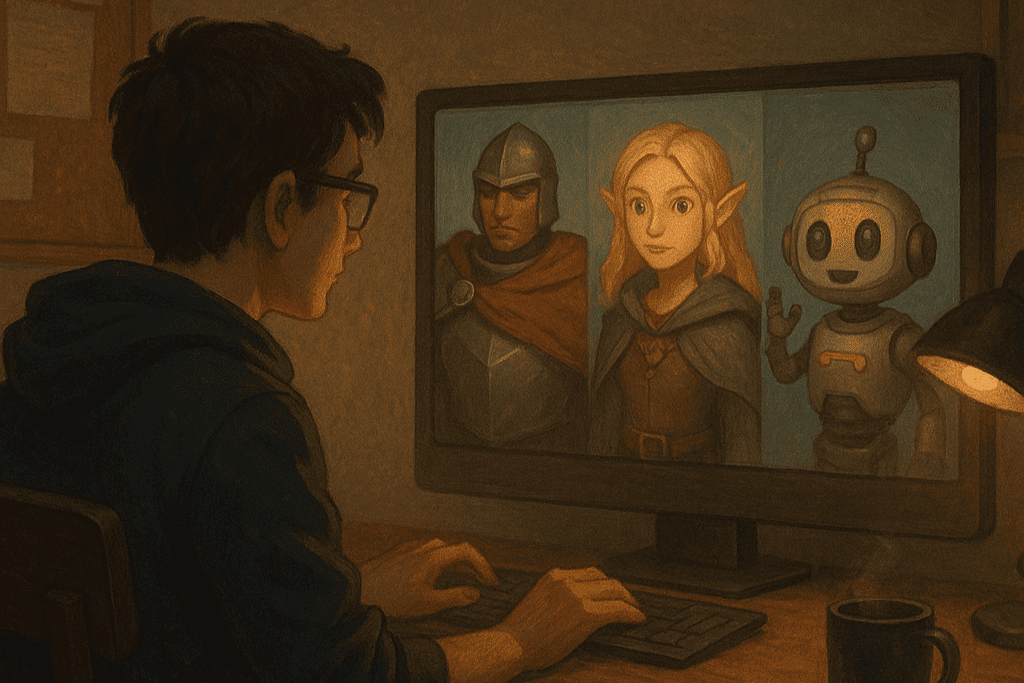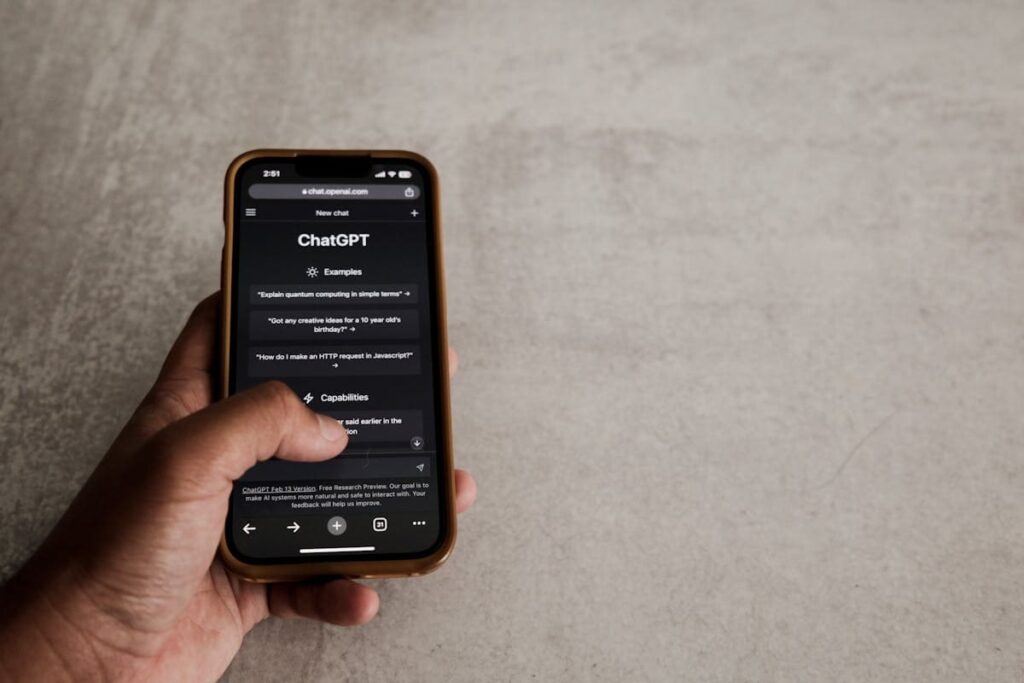A few years ago, the idea of talking to an AI felt like science fiction. Today, it’s part of everyday life. Whether you’re a student drafting essays, a professional speeding up your workflow, or simply someone curious about technology, chances are you’ve already crossed paths with ChatGPT.
But this isn’t just another tech trend. ChatGPT has become a cultural phenomenon—one of the top five most-visited websites in the world, with billions of conversations happening every day. From fueling workplace productivity to sparking late-night debates on social media, it’s everywhere.
And the buzz isn’t slowing down. With the recent launch of GPT-5, AI chatbots are smarter, more versatile, and more deeply woven into our lives than ever before. Some see them as indispensable helpers. Others raise alarms about safety, mental health, and regulation.
So why is everyone talking about ChatGPT—and why should you join the conversation? Let’s dive in.
The Rise of ChatGPT and AI Chatbots
From Experiment to Everyday Essential
When OpenAI first introduced ChatGPT, it was a fascinating experiment—an AI that could hold conversations and generate surprisingly human-like responses. Fast forward to today, and it has transformed into an everyday essential. Students use it as a study partner, marketers as a copy assistant, and developers as a coding companion. What started as curiosity has evolved into dependency.
A Top 5 Website Globally
The scale of ChatGPT’s adoption is staggering. In 2025, the platform ranked among the top five most-visited websites in the world, surpassing many long-standing internet giants. According to OpenAI, ChatGPT now processes over 2.5 billion prompts daily. That puts it in the same league as Google searches, YouTube views, and Facebook interactions.
This kind of reach isn’t just about numbers—it’s about cultural penetration. When a chatbot outage can spark memes, trending hashtags, and even public frustration, it’s clear that AI is no longer a background tool. It’s part of the social fabric.
What’s New with GPT-5 (2025 Edition)
Smarter, Faster, More Reliable
With the release of GPT-5 in August 2025, OpenAI introduced a major leap forward in AI chatbot technology. Unlike previous versions, GPT-5 lets users switch between fast reasoning for quick answers and deep reasoning for complex tasks. This flexibility has made it more dependable, whether you’re asking for a quick summary or solving a multi-step business problem.
Beyond Text – Multimodal Capabilities
GPT-5 isn’t just about words anymore. It can analyze images, charts, and even generate simple games. Imagine uploading a spreadsheet and asking the chatbot to find trends—or dropping in a chart and getting an instant explanation. This multimodal ability pushes ChatGPT far beyond being a text generator, making it a versatile problem-solving partner.
Why Businesses Love It
For companies, the improvements in GPT-5 are game-changing. SaaS founders are using it to prototype features, customer service teams rely on it for 24/7 support, and marketers lean on it for personalized campaigns at scale. In short, GPT-5 is no longer just an experiment—it’s a competitive edge.
How ChatGPT Is Shaping Culture and Work
From Study Buddy to Workmate
ChatGPT has slipped seamlessly into daily routines. For students, it’s a study partner that can explain complex concepts in plain English. For professionals, it’s a digital workmate that drafts emails, summarizes research, or even helps prepare presentations. In creative fields, it has become a brainstorming partner, generating fresh ideas at the click of a button.
Viral Dependence
One of the clearest signs of its cultural impact? Outages. When ChatGPT goes down, social media explodes with memes, jokes, and frustration. People describe feeling “helpless” without it—even for just a few hours. That level of dependency shows how ingrained AI has become in our workflows and even our sense of productivity.
Chatbots as Companions
But ChatGPT isn’t only about efficiency—it’s also about connection. Many people are turning to AI for companionship, whether it’s chatting late at night, asking for advice, or just sharing thoughts. Gen Z users, for example, have begun using chatbots as personal stylists, creative collaborators, and emotional sounding boards. What was once just a utility tool is now becoming a digital companion.
The Concerns We Can’t Ignore
Misinformation & Bias
As powerful as ChatGPT is, it’s not perfect. The chatbot often pulls from sources that aren’t fully verified—sometimes even echoing rumors or opinions from platforms like Reddit. This makes it easy for misinformation to spread at scale. For businesses and individuals, that means fact-checking is no longer optional; it’s essential.
Mental Health Risks
Therapists and researchers are beginning to warn about a phenomenon called “AI psychosis”—where people form unhealthy attachments to chatbots. Heavy reliance on AI for emotional support can blur the line between reality and simulation. While many use ChatGPT responsibly, the potential for emotional dependency is raising red flags.
Teen Safety & Regulation
Perhaps the most pressing concern is youth usage. Reports show that teens have been using chatbots for everything from study help to inappropriate sexting. In response, OpenAI recently rolled out teen safety tools and parental controls, aiming to protect younger users. Meanwhile, governments worldwide are debating stricter rules around chatbot use, data privacy, and AI accountability.
Why You Should Care (Even If You’re Not a Techie)
The New Competitive Edge
In business, ignoring AI is like ignoring the internet in the ’90s. Companies that adopt ChatGPT gain a serious edge—whether it’s cutting customer service costs, accelerating product development, or generating marketing campaigns in minutes. Those that resist risk falling behind competitors who move faster and smarter with AI at their side.
Everyday Life Integration
You don’t have to be a developer or CEO to benefit from ChatGPT. Students use it to simplify learning. Job seekers lean on it to polish résumés and prep for interviews. Creators use it to overcome writer’s block or spark new ideas. In other words, ChatGPT isn’t just for tech experts—it’s becoming a tool for anyone who wants to save time and think bigger.
Preparing for the Future
AI chatbots aren’t going away. They’re only becoming more intelligent, more accessible, and more integrated into daily life. Learning how to use them effectively isn’t just a “nice-to-have” skill anymore—it’s part of future-proofing yourself in work, school, and even personal growth.
Conclusion
ChatGPT isn’t just a headline-grabbing technology—it’s a turning point in how we interact with machines, with knowledge, and even with ourselves. In just a few years, it has gone from an experiment to a global phenomenon, reshaping classrooms, workplaces, and personal lives alike.
The release of GPT-5 has only accelerated this shift, making chatbots smarter, faster, and more versatile. At the same time, their influence has sparked important conversations about safety, ethics, and the human side of technology.
The takeaway is simple: ChatGPT is no longer optional. It’s shaping the way we learn, work, and connect—and those who embrace it will be better prepared for the world that’s coming.
The real question isn’t if you’ll use AI chatbots. It’s how.
FAQs
1. What is ChatGPT and why is it so popular?
ChatGPT is an AI chatbot developed by OpenAI that can understand and generate human-like text. It’s popular because it helps people work faster, learn better, and even spark creativity.
2. How is GPT-5 different from earlier versions of ChatGPT?
GPT-5 is smarter, more accurate, and multimodal, meaning it can handle not just text but also images, charts, and even simple games. It also allows users to switch between fast and deep reasoning modes.
3. Can ChatGPT replace human jobs?
ChatGPT won’t fully replace human jobs, but it is transforming them. Instead of doing everything, it assists with repetitive tasks, freeing people to focus on strategy, creativity, and decision-making.
4. Is ChatGPT safe for kids and teens?
OpenAI has added parental controls and safety tools for younger users, but experts recommend supervision. Teens may still encounter risks like overuse, emotional dependency, or exposure to inappropriate content.
5. Why should non-tech people care about ChatGPT?
Because ChatGPT is no longer just a tech tool—it’s a productivity partner, study buddy, and creative assistant. From writing emails to preparing for job interviews, it makes everyday tasks easier for everyone.


